
5 minute read
Small Towns, Big History
Deadwood: The Luck of the Draw
The discovery of gold in a narrow canyon in the northern Black Hills in 1875 brought prospectors, outlaws, gamblers, and prostitutes, turning the outpost into a lawless free-for-all. Many notable figures called Deadwood home for a time, including Wild Bill Hickok, Calamity Jane, Seth Bullock, Potato Creek Johnny, and Al Swearengen.
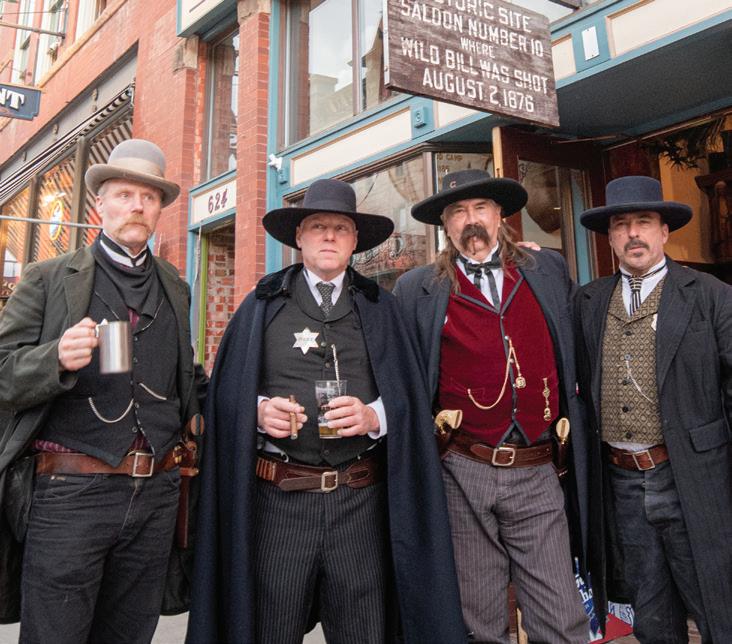
Many of Deadwood's most notorious figures were laid to rest in Mount Moriah Cemetery overlooking the city, including Wild Bill, Calamity Jane, and Seth Bullock.
Deadwood’s fortunes have waxed and waned over the decades, with fires and economic downturns taking their toll. Today, Deadwood is best known for its outdoor activities and casinos. The entire town has been designated a National Historic Landmark District, and its rich heritage is kept alive through historical reenactments and guided tours. Must-see stops include Mount Moriah Cemetery, the Adams Museum; Days of ‘76 Museum; and the Historic Adams House. In the winter, nearby Terry Peak offers skiing, snowboarding, and snowmobiling opportunities.
Custer: Solid Gold
Named after Lt. Colonel George Armstrong Custer, whose 1874 Black Hills Expedition discovered gold in nearby French Creek, Custer was the birthplace of the Black Hills Gold Rush. It's the oldest established town in the Black Hills,
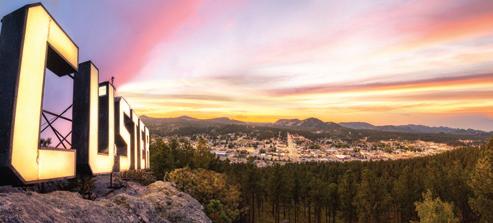
George Armstrong Custer and his 7th Cavalry were sent to the uncharted Black Hills in 1874 to find a location for a new fort and investigate the rumors of gold.
This small community is one of the most beautiful areas in the Black Hills, with an extensive network of trails and back country roads. It’s just a short driving distance from Mount Rushmore, Crazy Horse Memorial, and Jewel Cave National Monument. Custer State Park, known for its pristine lakes, granite rock formations, and abundant wildlife, lies just north and east of the city. Visitors will find a robust local food scene, art galleries, and museums.
Keystone: Home of the Presidents
This early mining town embraced tourism in 1927 when sculptor Gutzon Borglum chose nearby Mount Rushmore as the location for his monument to four American presidents.
Today, Keystone boasts family-friendly attractions and a chance to sample local cuisine in a turn-of-the-century setting. Iron Mountain Road, with its famous "pigtail" bridges, is a favorite scenic drive.

Spearfish: Take in the Scenery
Like many Black Hills communities, 1876 was a pivotal year for Spearfish. Originally called Queen City (later renamed after the fast-flowing creek where fish were “speared” by Native American tribes), the town was founded to supply food to the gold mining camps in the northern hills. Its location in a broad valley gave rise to an agricultural industry that helped the town diversify beyond a dependence on mining.
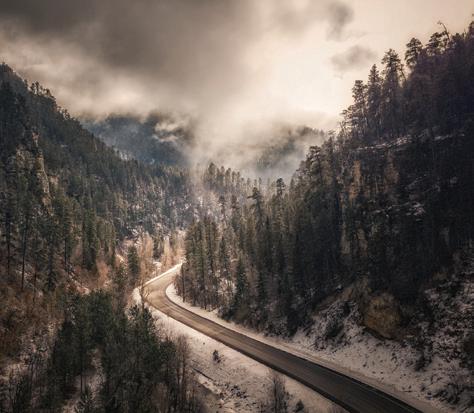
With 11,000 year-round residents and 5,000 students who attend Black Hills State University, Spearfish is the secondlargest community in the Black Hills and one of the fastest-growing “micropolitans” in the Midwest. Its natural beauty and a quaint downtown perfect for leisurely strolling offer experiences for everyone. The town’s location at the mouth of Spearfish Canyon makes it the perfect launching point for outdoor adventures. Shops, galleries, restaurants, and brew pubs have transformed the community into a year-round destination.
Lead: Mining Past, Scientific Future
Founded in 1876 by Fred and Moses Manuel, Lead (pronounced LEED) was named after the rich vein of ore discovered by the brothers who, along with Hank Harney and Alex Engh, staked a claim and established the Homestake Gold Mine, which operated for 125 years. Today, the site houses the Sanford Underground Research Facility (SURF), dedicated to furthering scientific discovery through experiments conducted 4,850 feet below ground. In the winter, Lead's ample snowfall attracts winter sports enthusiasts.

Homestake was the largest and longest continually-operating mine in America. By the time it closed, over 40 million ounces of gold valued at more than $1 billion had been extracted.
Hill City: The Heart of the Hills
Hill City is the second-oldest community in the Hills and was known as “a town with a church on each end and Hell in between.” Its location near the geographical center of the Black Hills inspired its motto, “The Heart of the Hills.” The town has evolved into a thriving arts community, with shops, museums, and other attractions. Visitors experience the rumble of a locomotive as it felt a century ago when riding the steam-powered 1880 Train through the Black Hills. Relax in one of the local wineries or craft breweries located within a few miles of the town center.
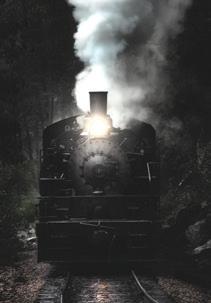
Sturgis: A Rider’s Paradise
In 1878, Sturgis was established to provide goods and services for nearby Fort Meade, an outpost for the 7th Cavalry until 1944. The Black Hills National Cemetery was established in 1948 to provide a final resting place for veterans and their spouses.
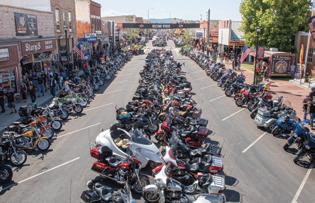
The population in Sturgis swells to over 400,000 during the motorcycle rally, making it the largest city in South Dakota for 10 days.
Today, the town of 6,900 is best known for its annual motorcycle rally. During the offseason, you can still get your fill of Harleys at the Sturgis Motorcycle Museum, or check out the public sculptures and unique dining options ranging from doughnuts to steak tips.
Hot Springs: Make a Splash
The natural warm waters that inspired its name have drawn people to Hot Springs for centuries. Early settler Fred Evans envisioned turning the entire town into a health spa.
Hot Springs is home to the largest Columbian mammoth exhibit in the world, and its historic downtown offers visitors a glimpse of early pioneer life. Kids and adults alike will enjoy a plunge into the 87-degree healing mineral waters of the local indoor pool. Wind Cave National Park, Angostura Reservoir, and a wild horse sanctuary are all a short drive from the Gateway to the Southern Hills.
Belle Fourche: Center of the Nation
French for “beautiful fork,” Belle Fourche (pronounced Bell- FOOSH) lies at the confluence of the Belle Fourche and Redwater Rivers. Seth Bullock, former sheriff of Deadwood, bought up land and enticed the railroad to build a depot, offering free rightof-way and a new terminal. Belle Fourche soon thrived, becoming the world’s largest livestockshipping point for a period.

Belle Fourche lays claim to being the “geographic center of the nation” and remains an important agricultural hub serving the Tri-State Area (NW South Dakota, NE Wyoming, and SE Montana). Visitors to this pioneering town, a gateway to the northern hills, can enjoy antique shops, museums, locally-owned restaurants, and a flag-lined walking path along the Center of the Nation Monument.




